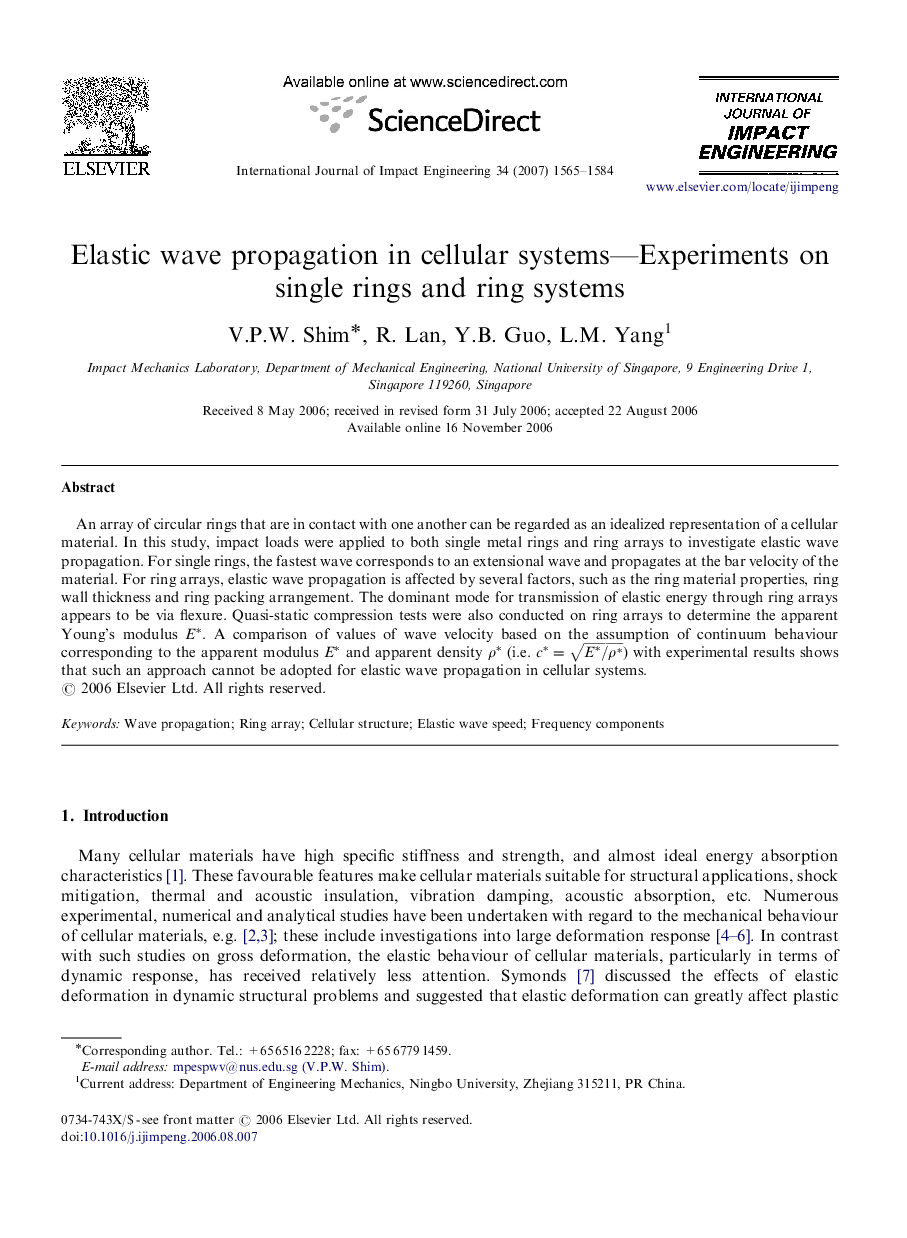| Article ID | Journal | Published Year | Pages | File Type |
|---|---|---|---|---|
| 777199 | International Journal of Impact Engineering | 2007 | 20 Pages |
An array of circular rings that are in contact with one another can be regarded as an idealized representation of a cellular material. In this study, impact loads were applied to both single metal rings and ring arrays to investigate elastic wave propagation. For single rings, the fastest wave corresponds to an extensional wave and propagates at the bar velocity of the material. For ring arrays, elastic wave propagation is affected by several factors, such as the ring material properties, ring wall thickness and ring packing arrangement. The dominant mode for transmission of elastic energy through ring arrays appears to be via flexure. Quasi-static compression tests were also conducted on ring arrays to determine the apparent Young's modulus E*E*. A comparison of values of wave velocity based on the assumption of continuum behaviour corresponding to the apparent modulus E*E* and apparent density ρ*ρ* (i.e. c*=E*/ρ*) with experimental results shows that such an approach cannot be adopted for elastic wave propagation in cellular systems.
